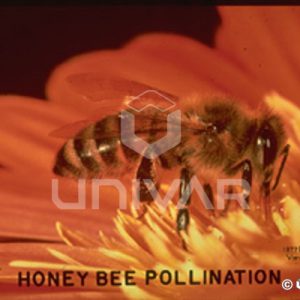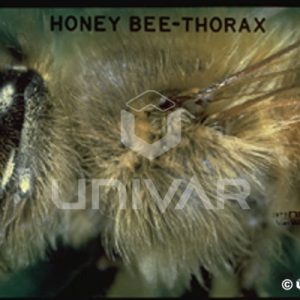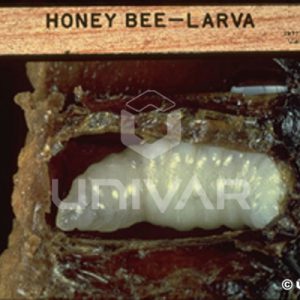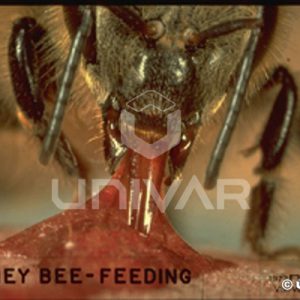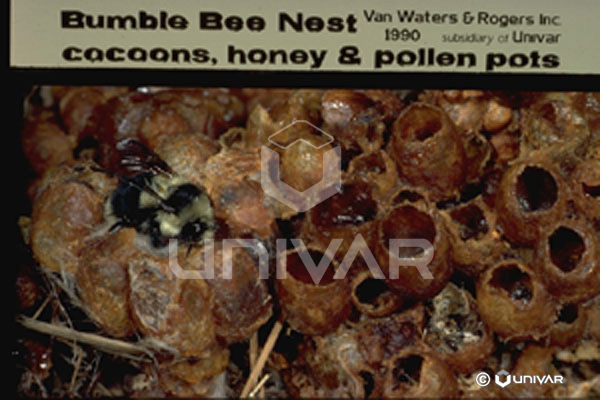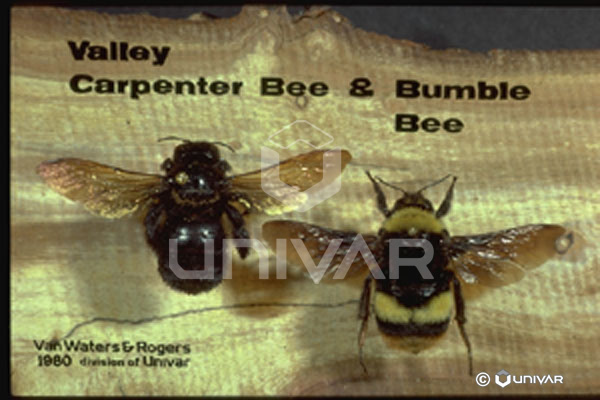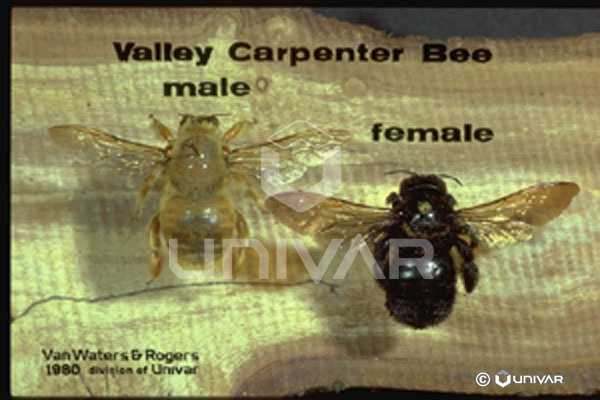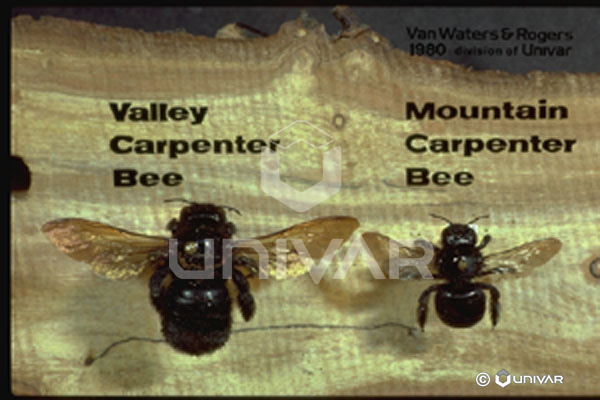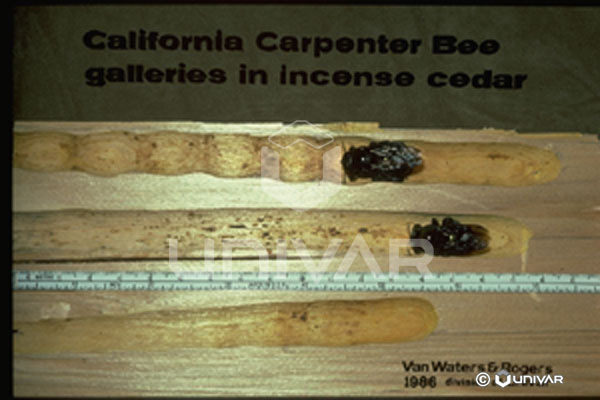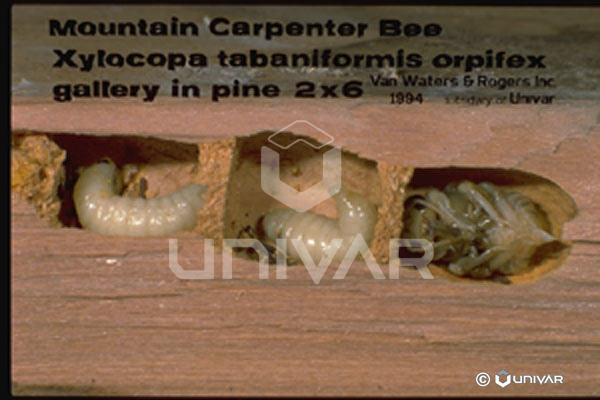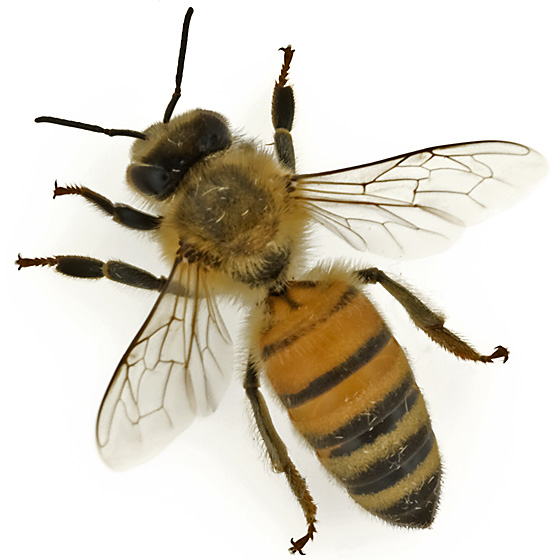
HONEYBEE
Common Name: Bee – Honeybee
Latin Name: Apis mellifera
Common Family Name: Bees
Latin Family Name: Apidae
Other Names: Several subspecies exist, including the Italian, German, and Africanized honeybees.
Origin: A native of Europe and Asia, the honeybee was introduced to the United States for honey production and pollination of crops. The Africanized honeybee (a.k.a. “killer bee”) evolved in Africa, was introduced to South America, and found its way north into the U.S.
Biology: Honeybees are social bees, with colonies composed of a single Queen and many hundreds of workers. New colonies are begun when additional Queens are produced in a colony and all but one leave. Each newly fertilized Queen takes a consort of workers with her. Males (drones) are produced only for mating with these new queens, and the males then die. Only the females can sting, but all workers are females and all of the working members of the hive can sting. Honeybees can sting humans only once, losing their stinger in the process. Larvae are fed pollen and honey, and the honey is created by continual mastication and dehydration of the nectar and other sugary fluids the workers gather. Honeybee hives remain active year-round and often will be located within structures. Queens may live as long as 5 years while workers live less than 2 months in the active summer months.
Identification: The workers are about a half-inch long and are various shades of brown and black colors, with very dark heads, legs, and antennae. They are densely covered with short, pale hairs. The antennae are bent in their middle, or “elbowed”. The mouth is an elongated tongue formed by several parts and enables the bees to reach into fairly deep flowers to take up the nectar there. The bees have 2 pairs of wings, separating them from some similar flies that mimic the bee’s appearance.
Characteristics Important in Control: Bee activity may be reduced around eating areas with good sanitation, by keeping food spills cleaned up and keeping trash receptacles closed. Colonies located within walls or other voids may be removed by professional beekeepers if possible. If necessary they may be treated with a dust insecticide to kill the bees, and the hive should then be removed. If the hive is left future problems will occur from melting wax and honey, as well as the attraction of the materials to ants and carpet beetles.
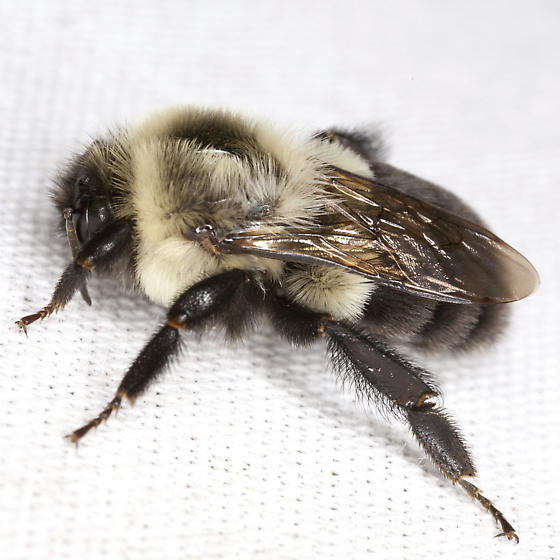
BUMBLEBEE
Common Name: Bee – Bumblebee
Latin Name: Bombus
Common Family Name: Bees
Latin Family Name: Apidae
Other Names:
Origin: There are a great many species of bumblebees that are native to North America.
Biology: These are social bees that establish small colonies, using many kinds of available cavities. Nests may be in the ground, in hollow logs or trees, in walls or structures, or in other cavities they can find. Nests do not survive the winter months, but instead, each colony is begun in the spring by a fertilized, hibernating queen. Colonies grow to a few hundred workers, sometimes more, by the end of the summer. Males and new queens are produced, mating takes place, and the males, the old queen, and all the workers die. The nest consists of wax “honey pots” that are filled with nectar, and adjacent cells that contain the eggs and larvae. The larvae feed on a paste of honey and pollen placed near them by the workers. The nest is often lined with grass or other dried plant material. The workers generally are not aggressive unless their colony is threatened.
Identification: Bumblebees can usually be separated from other bees by their large size and densely hairy bodies, as well as by compound eyes that are not hairy. The coloring is normally black with patches of yellow or orange hairs.
Characteristics Important in Control: These are beneficial bees that normally do not warrant control. However, if their nest is in a sensitive location it can be treated with a residual dust product, and the nest and cells removed and disposed of.
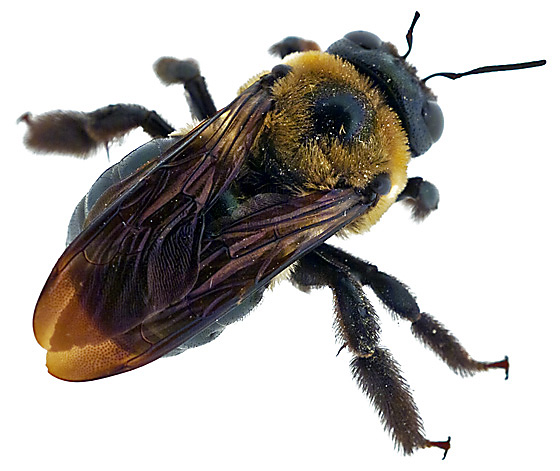
CARPENTER BEE
Common Name: Bee – Carpenter bee
Latin Name: Xylocopa
Common Family Name: Bees
Latin Family Name: Apidae
Other Names:
Origin: A number of native species of these bees occur in North America.
Biology: Carpenter bees are solitary bees that get their common name from their habit of boring chambers in solid wood to create living quarters for their larvae. Softer woods such as redwood may be preferred, and the wood is not eaten, but instead is reduced to sawdust (“frass”) which is ejected from the tunnels. The female bee does the excavating, and several females may be working in the same section of wood and using the same entrance hole, but creating separate galleries. Males and females over-winter in old galleries and emerge in the spring to mate. They will both die before the end of the summer and it is their offspring that begin the next year’s activity. The galleries may be used repeatedly, with each new female lengthening the tunnel, which often can be over 10 feet in length. She creates an average of 6 or 7 cells, each separated by a plug, and places an egg and a food supply of pollen and nectar in each cell. Once this is completed she never returns to care for the larvae.
Identification: Several species of carpenter bees are fairly small, but the common Xylocopa species that may invade structural wood are some of the largest bees in North America, with some of the largest over an inch long. Coloring normally is shiny metallic blue-green to black, although the male of the Valley Carpenter Bee is light tan. They may be separated from bumblebees by the relative lack of hairs on the abdomen, as well as by their more rapid, erratic flight habits Damage from these bees is hidden within the wood, often with only the round entrance hole visible. Within the wood the galleries extend with the grain of the wood, and are almost perfectly round, ending with the cells in which the larvae develop.
Characteristics Important in Control: Surface coatings of paint or varnish are somewhat repellent, but not always. Injection of a residual dust insecticide into the gallery opening, followed by placement of a plug in the opening, will confine the bees to this treated area if done at night. Holes can then be permanently sealed.
